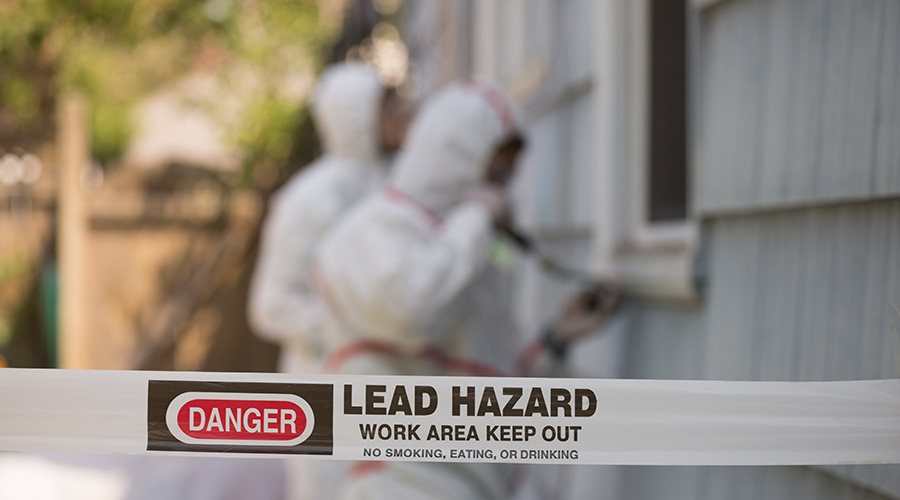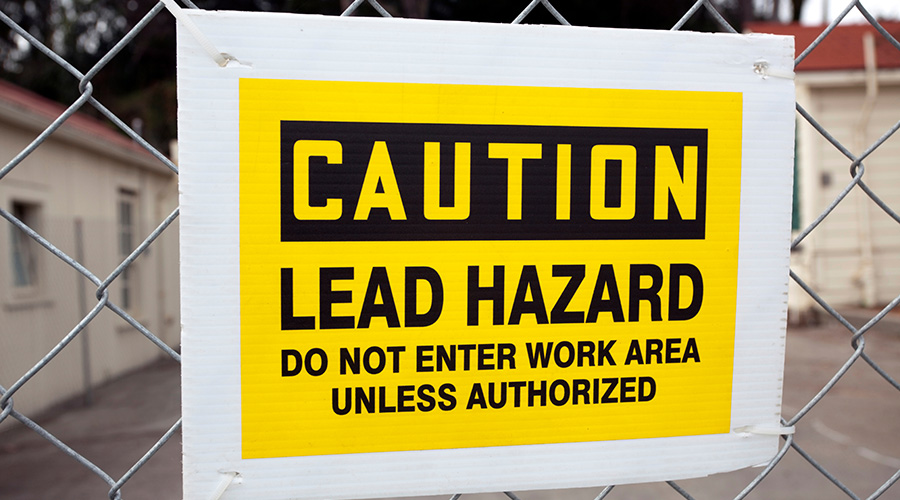Managers Discuss Strategies for Building an Operating Budget
By Chris Matt, Managing Editor - Print & E-Media
OTHER PARTS OF THIS ARTICLEPt. 1: This Page
*
Bob Devonshire, Maintenance Superintendent, County of Lancaster, Pa.
*
Mark Deming, Director of Facilities, Branford (Conn.) Public Schools
*
Tom Smyth, Director of Facilities Services, Cobleskill (N.Y.) Regional Hospital
Successfully building a budget not only helps managers shape their annual financial outlook. It also enables them to take an in-depth look at facilities, personnel, and equipment to identify cost-cutting measures that align with their organizations' missions.
What is your role in developing an operating budget?
DEVONSHIRE: There are three of us that sort of pool our budgets together. Each one of us has a different aspect that we're responsible for. My responsibility falls into the building maintenance side of things, including daily operations and if there are components or parts we want to replace, upgrade, or repair, as well as making recommendations for capital projects. Once we pull all of our information together, then the three of us will sit down and compile our whole budget.
DEMING: I have full responsibility for capital planning and budgeting, maintenance, grounds and utilities. Utilities are probably the most difficult area. You really can't predict how much of a building is going to be used and increased use and increased costs. Increased costs in the utilities usually come out in January, which is dead center in our budget year. Typically, our electrical (provider) announces in December that they're going to have rate increases in January.
SMYTH: I'm the one who creates the operating budget. It's nothing wondrous that happens here in terms of creating the budget. I just really use what happened in the past with some sort of checking of what we need and what is going on with energy. I create it, it gets submitted to the vice president of finance, and she does her review and checks.
With whom do you consult most in developing a budget?
DEMING: A staff of three building supervisors provides a needs assessment, an administrative assistant provides historical data, and (there is a) final review with the superintendent of schools. I'll put out a questionnaire-type e-mail to the three supervisors that report to me: "What's the condition of the roofs. Are there leaks? When is the last time we retrofitted your lighting? What do you see coming this year for motor replacement?" I try to forecast what we're going to need. That (exercise) gives us the ability to really sit down and look at our buildings and our equipment and see what's needed so we can prioritize what money we do get.
SMYTH: In regards to a budget-planning team, it's (mostly) a planning team of one. I'll talk to my supervisor if I think he has a little bit more information about something.
DEVONSHIRE: Our office manager (handles) the payroll portion of our budget. She goes through payroll, and we're pretty much given, "Here's your existing payroll. These are your (cost of living allowance) amounts. These are your benefit amounts." You plug the numbers in, and they pretty much are what they are. She works through some overtime calculations she's come up with on a rough estimate of what guys will work in overtime. Our third person is the department head, and he oversees everything once we bring it all together.
Do you employ an incremental budget approach or a zero-based approach?
SMYTH: There's no zero-based budgeting. I'm not wiping the slate clean. I'm looking at the number, all the research that I do, my gut feeling, and what I know from dealing with vendors and suppliers.
DEVONSHIRE: We actually use a combination of both. We're getting that appropriation number as a target. We try to look at line items from the previous year or several previous years and project an increase, such as utilities. The rest of the budget is more zero-based, where we go back, look at what we did, and try to fill in the voids where we can.
DEMING: The town will contact us and say, "This is what we feel the taxpayers can bear this year." We try to shoot for that number, but there are so many uncontrollable costs —salaries increasing, health care costs going up, utility costs going up.
What is the process by which you assign priorities to budget items?
DEVONSHIRE: We'll look at the equipment itself and ask, "What is its criticality to the overall operation of the building or the program that's taking place in that building?" From a priority standpoint, it's kind of a give and take. When you're looking at one building — say our county prison versus a parks-department building — they may have four items that are exactly the same, but they'll be totally different priorities.
SMYTH: (Health and safety) is the No. 1 thing. We look at what kinds of activities and actions we have to do to make sure we're going to pass Joint Commission surveys. I'll write an explanatory memo telling (hospital executives) the price, here's the reason for it, general citations, and whether it's about codes or if it's about Joint Commission standards.
DEMING: Health and safety is priority one. (Then it's) critical equipment maintenance, contractual requirements, and we work down from there. (For health and safety issues) I work closely with our fire marshal in town. I work closely with our health district representatives. Obviously, (I work with) our building official just to make sure we're up to date on codes.
What key line items must you include in your budget?
DEMING: Heating, cooling, lighting and plumbing maintenance. (Maintenance) contributes to the health and well-being of the students and staff. It reverts back to the health and safety being (priority) No. 1. If you don't have working plumbing in the school or sufficient lighting in the classrooms, or if you don't have heat or air conditioning that's working when you need it, (the learning environment and the health of occupants are at risk).
DEVONSHIRE: Payroll is the first one. We can't be without staff. Utilities would probably be next. Our contracted services (is third). Then our equipment and building maintenance and repair line item (is fourth).
SMYTH: All the energy line items — electricity, fuel, natural gas, water. We have a supplies line that I keep close track of. (Energy-related items) are the ones I keep a very close eye on.
How has the amount of scrutiny your budget receives changed since the recession?
DEVONSHIRE: Obviously, as a government agency, we're tax-funded. On the local, county level, the tax base and the amount of people that are unemployed have a direct impact on the tax dollars that we can bring in. Then, we have the things that are state funded and federally funded, and those numbers have been going down drastically over the last couple of years.
SMYTH: Like everybody, we're pinching pennies a little bit more. I challenge just about every purchase. The fellow who does most of the ordering, he's coming in with requisitions, and I'm questioning him. "What do we need this for? What do we need that for? And can we make due with a little bit less?"
DEMING: The recession really hasn't affected us that much. As a matter of fact, it's probably actually helped. I do a lot of my work with sub-contractors, and a lot of them were unemployed, and a lot of them were begging for work the last couple years. We've actually been able to — I don't want to say take advantage of the situation — but in reality, we were. We became one of the few games in town for all of these contractors. It's actually been beneficial to my budget.
What type of product research do you conduct as part of building a budget?
DEMING: I continuously search for products and services that will reduce costs in the associated line item or provide savings in other line items, i.e., products that provide energy savings, longer life cycles to reduce maintenance costs, etc.
SMYTH: Despite the fact that we're pinching pennies, if I see something that I think is going to make us more efficient and get us to do the job faster or better — or if there's anything that would improve the way we deliver customer service — we're going to try and make sure that gets approved so we can do a better job and a more efficient job.
DEVONSHIRE: To use an air-conditioning or HVAC unit as an example, the guys will go out and look at what we have, what works, (and) what technology is in our newer buildings, and try to incorporate those items. What we're trying to do over time is standardize as much as we possibly can across the board.
How do you communicate and justify your budget plan to key decision-makers?
DEMING: We use PowerPoint presentations quite extensively and find that providing trending/historical data and outside information to the decision-makers makes for a smooth approval process. From the facilities standpoint, we're typically very low in our increase. So we're typically below what the overall operating budget requires in increases. We sail right through usually.
SMYTH: (The vice president of finance) will say, "I keep your memos and your e-mails, Tom, because what happens is, when the auditors come, you've laid it out in such a way that I don't have to jump through hoops for them. I can just say, 'This is the reason for spending here.'"
DEVONSHIRE: We actually have a budget department, and they're called the budget services department. They employ budget analysts. They are the ones that give us our appropriation number. We put our budget together, submit it to them, and they usually have it for about a month. Then we go for a budget hearing. Sometimes they go through the budget line by line and sometimes they look at key, specific items. They would have reviewed our budget prior to this meeting. There are about six people who are reviewing it.
Related Topics:











